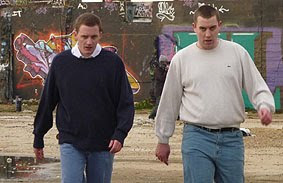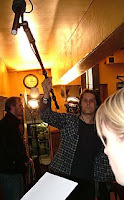 By Dan Parkes (Director)
By Dan Parkes (Director)The style of 'guerilla filmmaking' does not suit every project. Few would have thought it would suit a gentle relationship-heavy drama about English village politics...!
Technically, as definied in Wikipedia, it means independent low budget film making using "skeleton crews, and simple props ... shot quickly in real locations without any warning, and without obtaining permission from the owners of the locations." It is usually because filmmakers "don't have the budget to get permits, rent out locations, or build expansive sets." This often means handheld 'gritty' shots with no artificial lighting, make-up or large cinematic cameras that would draw obvious attention.
 Anecdote: Wikipedia states that this style is not used by studios as they could be sued or fined. But I know from personal experience this is not always the case. I worked for an overseas studio who because clearance for a particular shot in a UK railway station was astronomically expensive, successfully filmed it guerrilla style by wandering in with a large cinematic camera in hand looking like they were about to catch a train. No one noticed until they had got 3 takes done, were questioned briefly but left with staff none the wiser that they had filmed what they wanted. I am definitely not recommending this course... but would recommend certain locations made themselves more helpful when it comes to doing some simple non-instrusive filming and are willing to pay for it.
Anecdote: Wikipedia states that this style is not used by studios as they could be sued or fined. But I know from personal experience this is not always the case. I worked for an overseas studio who because clearance for a particular shot in a UK railway station was astronomically expensive, successfully filmed it guerrilla style by wandering in with a large cinematic camera in hand looking like they were about to catch a train. No one noticed until they had got 3 takes done, were questioned briefly but left with staff none the wiser that they had filmed what they wanted. I am definitely not recommending this course... but would recommend certain locations made themselves more helpful when it comes to doing some simple non-instrusive filming and are willing to pay for it.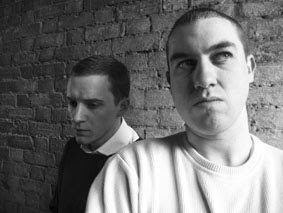 For us, guerilla filmmaking was perfect for our black and white flashback scenes which details the main character's backstory in which he gets involved in a gang and drug culture that dramatically affects his future reputation and perception of life. Crew only consisted of myself with a shoulder mounted camera (without the 35mm lenses) and I worked with the two actors, Dan Smith and Pete Allen filming almost whereever we felt like it: running down a main street, through parks, down alleyways, even beating up a Chinese actor with an ever-increasing audience watching us. We were never once stopped!
For us, guerilla filmmaking was perfect for our black and white flashback scenes which details the main character's backstory in which he gets involved in a gang and drug culture that dramatically affects his future reputation and perception of life. Crew only consisted of myself with a shoulder mounted camera (without the 35mm lenses) and I worked with the two actors, Dan Smith and Pete Allen filming almost whereever we felt like it: running down a main street, through parks, down alleyways, even beating up a Chinese actor with an ever-increasing audience watching us. We were never once stopped!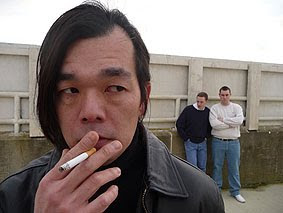
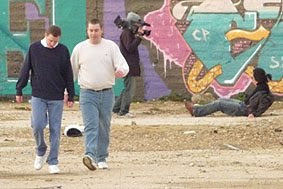 A very simple tip is to be very well prepared. We spent a lot more time rehearsing the scenes than we ever did filming them. An interesting device we used is that the camera was actually the main character's point of view (POV) so we spent time practicising how to interact with the camera as you would a person, talking to them, passing them items, being carried around (such as during the overdose sequence). It meant as a director I became part of the action -in fact one of the actors- so was a fully immersive and at times quite frightening experience.
A very simple tip is to be very well prepared. We spent a lot more time rehearsing the scenes than we ever did filming them. An interesting device we used is that the camera was actually the main character's point of view (POV) so we spent time practicising how to interact with the camera as you would a person, talking to them, passing them items, being carried around (such as during the overdose sequence). It meant as a director I became part of the action -in fact one of the actors- so was a fully immersive and at times quite frightening experience.